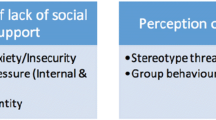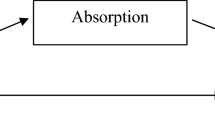Abstract
Within the industry of videogames, the customers can have a substantial effect on the games, which are further developed. The users of videogames can be vocal in their approval and disapproval, and in their suggestions on future implementation and changes. It has been demonstrated that their comments and requests have a direct effect on the next game, or future game, to be produced. The players are not passive receptors to videogames media, but active participants in a mutual relationship with those who create the videogames that they play. This paper provides an exploration of videogames, and on how their use are significantly embedded in the portrayal of female characters, in that portrayals and stereotypes can be (and are) both reinforced and challenged, and are in perpetual modes of creation and recreation through dynamics of interaction between game developers and gamers themselves.
This study focused on the portrayal and perceptions surrounding the female character Samus Aran, the main protagonist featured in two of the Metroid games series: Metroid Prime and Metroid: Other M. Opinions regarding Samus Aran were sourced from online forum websites and games magazines including IGN.com, EDGE magazine and Metacritic.com. The evidence suggests that the videogame players’ opinions and requests for various gameplay elements did influence the Metroid developers’ later designs and modifications to the Sanus Aran character in later versions.
Similar content being viewed by others
Abbreviations
- FPS:
-
first-person shooter
- RTS:
-
real-time strategy
- RPG:
-
role-playing game
- MMO:
-
massively multiplayer online
- MUD:
-
multi-user dungeon (sometimes called a multi-user domain)
- MMORPG:
-
massively multiplayer online role-playing game. (e.g. World of Warcraft)
- 3D:
-
three dimensional
- 2D:
-
two dimensional
- NPC:
-
non-player character
- PC:
-
generally, personal computer, may also mean player character
- NES:
-
Nintendo Entertainment System
- SNES:
-
Super Nintendo Entertainment System
- GBA:
-
GameBoy Advance
Further Reading
Angelle, A. (2010) ‘Shrink It & Pink It’ — the sad truth about how tech markets to women. Available from: http://www.lemondrop.com/2010/02/09/shrink-it-and-pink-it-how-tech-markets-to-women [accessed 25/11/2010]
Baudrillard, J. Selected writings. Pages 166–184. Copyright ©1988 Stanford University Press, USA
Bellis, M. (2010) Computer and video game history: early arcade machines, the history of home consoles, and the history of the video game. Available from: http://inventors.about.com/library/inventors/blcomputer_videogames.htm [accessed 30/11/2010].
Blumer, H. Movies and Conduct. Copyright ©1933 Macmillan & Company, NY, USA
Blumer, H., Morrione, T. George Herbert Mead and human conduct. Copyright ©2004 Rowman & Littlefield Publishers, Inc., ML, USA
Beasley, B., Standley, T.C. Shirts vs. Skins: clothing as an indicator of gender role stereotyping in video games. Mass Communication and Society 5(3) (2002) pp. 279–293
Bosch, T. (2009) The pink gadget hall of shame: pink it and shrink it. Available from: http://www.doublex.com/section/life/pink-gadget-hall-shame [25/11/2010]
Brinkerhoff, D.B., White, L.K., Ortega, S.T., Weitz, R. Essentials of Sociology. Copyright ©2008 Thomson Learning Inc., California, USA
Bryce, J., Rutter, J. (2001). The gendering of computer gaming: experience and space. Available from: http://www.cric.ac.uk/cric/staff/jason_rutter/papers/lsa.pdf [26/04/2010]
Bryce, J.; Rutter, J. (2002a). Computer and video gaming: academic perspectives, positions and research resources. CRIC discussion paper, University of Manchester, Manchester, IP 2002
Bryce, J.; Rutter, J. (2002). Killing like a girl: gendered gaming and girl gamers’ visibility. Presented at: Computer Games and Digital Cultures, Tampere, Finland [Online]. Available from: http://digiplay.info/files/cgdc.pdf [accessed 25/11/2010]
Bryman, A. Social research methods. Copyright ©2008 Oxford University Press, UK
Burn, A.; Carr, D.; Schott, G.; Buckingham, D. Videogames: text, narrative and play. Presentation to seminar at Institute of Education London UK as part of the Textuality in Video Games: Interactivity, Narrative Space and Role Play project, 2003
Cassell, J.; Jenkins, H. From Barbie to Mortal Kombat: gender and computer games. Copyright ©1998 MIT Press, London, UK
Connell, R. W., Messerschmidt, J. W. (2005) Hegemonic Masculinity: Rethinking the Concept. Gender & Society. Vol. 19(6), pp. 829–859.
D’Silva, R. (2010) History of Video Games [Online]. Available: http://www.buzzle.com/articles/history-of-video-games.html [30 November 2010].
Fernandez-Vara, C., Zagal, J. P., Mateas, M. (2005) Evolution of Spatial Configurations in Videogames. Digital Games Research Association, Proceedings of DiGRA 2005 Conference: Changing Views–Worlds in Play.
Fraser, M., Greco, M. (2005) The Body: A Reader. Oxon: Routledge.
GameTrailers.com (2011) The Metroid Retrospective [Online]. Available: http://www.gametrailers.com/game/the-metroid-retrospective/5261 [18 April 2011].
Giles, D. (2003) Media Psychology. New Jersey: Lawrence Erlbaum Associates, Publishers.
Gillen, K. (2006) The Girl Who Wanted to be God. [Online]. Available: http://gillen.cream.org/wordpress_html/?page_id=1103 [26 April 2010].
Goffman, E. (1968) Stigma: notes on the management of spoiled identity. London: Simon & Schuster.
Grant, C. (2010) Interview: Metroid: Other M producer Yoshio Sakamoto [Online]. Available: http://www.joystiq.com/2010/03/12/interview-Metroid-other-m-producer-yoshio-sakamoto/ [4 April 2011].
Griffiths, M. D., Davies, M. N. O., Chappell, D. (2003) Breaking the Stereotype: The Case of Online Gaming. CyberPsychology & Behaviour, Volume 6(1).
Gurevitch, M., Bennett, T., Curran, J., & Woollacott, J. (Eds.) (1982) Culture, Society and the Media. London: Methuen & Co. Ltd.
Hannaford, K. (2007) Top ten list of female video-game characters you should idolise. [Online]. Available: http://www.shinyshiny.tv/2007/04/top_ten_list_of.html [26 April 2010].
Harman, M. (2001) The Reluctant Heroine: The Longest Journey by FunCom [Online]. Available: http://www.strangehorizons.com/2001/20010514/longest_journey.shtml [26 April 2010].
Harris, C. (2004) Metroid: Zero Mission Director Roundtable–Game Boy Advance Feature at IGN [Online]. Available: http://uk.gameboy.ign.com/articles/488/488084p1.html [2 April 2011].
Hartmann, T., Klimmt, C. (2006) Gender and Computer Games: Exploring Females’ Dislikes. Journal of Computer-Mediated Communication, Vol. 11(4), article 2.
Hunter, W. (2000) The History of Videogames: from ‘Pong’ to ‘Pac-Man’ [Online]. Available: http://www.designboom.com/eng/education/pong.html [30 November 2010].
IGN (2003) GDC 2003: Metroid Wins Game of the Year–Cube News at IGN [Online]. Available: http://uk.cube.ign.com/articles/388/388472p1.html [2 April 2011].
Ivory, J. D. (2006) Still a Man’s Game: Gender Representation in Online Reviews of Video Games. Mass Communication & Society, Vol. 9(1), pp. 103–114.
Kennedy, H. W. (2002) Lara Croft: feminist icon or cyberbimbo? On the limits of textual analysis. The International Journal of Computer Game Research. Vol. 2(2). [Online]. Available: http://www.gamestudies.org/0202/kennedy/ [26 April 2010].
Kent, S. L. (2001) The Ultimate History of Video Games: from Pong to Pokémon and beyond: the story behind the craze that touched our lives and changed the world. California: Prima Life Publishing.
Kirriemuir, J., McFarlane, A. (2004) Futurelab Series, Report 8: Literature Review in Games and Learning. Bristol: Futurelab.
Kohler, C. (2007) “Jade Is Black?!”: Racial Ambiguity in Games [Online]. Available: http://www.wired.com/gamelife/2007/02/jades_black_rac/ [26 April 2010].
Lawler, S. (2002) Narrative in Social Research in May, T. (ed.) Qualitative Research in Action. London: Sage Publications Ltd, pp. 242–258.
Levy, S. (1984) Hackers: Heroes of the Computer Revolution. Harmondsworth, Middlesex: Penguin Books Ltd.
McLaughlin, R. (2007) IGN Presents The History of Metroid: Take a look back at gaming’s greatest bounty hunter [Online]. Available: http://uk.games.ign.com/articles/815/815011p2.html [4 April 2011].
McQuail, D. (2000) Mass Communication Theory (4th ed.). London: Sage.
Meloni, W. (2010) The Next Frontier–Female Gaming Demographics [Online]. Available: http://www.gamasutra.com/blogs/WandaMeloni/20100330/4812/The_Next_Frontier_Female_Gaming_Demographics.php [25 November 2010].
O’Connor, P. (2004) Deepening Emotional Involvement With First-Person Video Game Heroes [Online]. Available: http://www.gamedaily.com/articles/features/deepening-emotional-involvement-with-first-person-video-game-heroes/ [4 April 2011].
Reinecke, L., Trepte, S., Behr, K. (2007) Why Girls Play–Results of a Qualitative Interview Study with Female Video Game Players. Institute of Social Psychology, Hamburg University, Vol. 2007(77).
Reparaz, M. (2008) The Top 7… irritating female characters [Online]. Available: http://www.gamesradar.com/f/the-top-7-irritating-female-characters/a-20080728104413532023 [26 April 2010].
Reynolds, L. T., Herman-Kinney, N. J. (eds.) (2003) Handbook of Symbolic Interactionism. Maryland: Rowman & Littlefield Publishers, Inc.
Robinson, L. (2007) The cyberself: the self-ing project goes online, symbolic interaction in the digital age. New Media & Society. London: SAGE Publications. Vol. 9(1), pp. 93–110.
Schiano, D. J., White, S. (1998) The First Noble Truth of CyberSpace: People are People (Even When They MOO). ACM Conference on Human Factors in Computing Systems (CHI), CHI 98, pp. 18–23.
Schott, G. R., Horrell, K. R. (2000) Girl Gamers and their Relationship with the Gaming Culture. The International Journal of Research into New Media Technologies, Vol. 6(4), pp. 36–53.
Spencer (2009) Bayonetta Director Discusses Bayonetta’s Sexiness. [Online]. Available: http://www.siliconera.com/2009/06/15/bayonetta-director-discusses-bayonettas-sexiness/ [26 April 2010].
Stahl, T. (ed.) (2010) Timeline of Video Games: Chronology of the History of Video Games [Online]. Available: http://www.thocp.net/software/games/games.htm [30 November 2010].
Tanner, N. (2009) 10 Best Female Game Characters [Online]. Available: http://uk.greenpixels.com/articles/features/2353/10-Best-Female-Game-Characters [26 April 2010].
The Magic Box (2007) US Platinum Chart Games [Online]. Available: http://www.the-magicbox.com/Chart-USPlatinum.shtml [2 April 2011].
THG Reporting Team (2007) The 50 Greatest Female Characters in Video Game History [Online]. Available: http://www.tomshardware.co.uk/the-50-greatest-female-characters-in-the-history-of-video-games-uk,review-29327.html [26 April 2010].
Thorne, D. (2009) Reinforcing the Wall: Hegemonic Masculinity and the Ideal Self in Massively Multiplayer Online Games. [Online]. Available: http://gamecareerguide.com/features/795/reinforcing_the_wall_hegemonic_.php [26 April 2010].
tsr’s NES Archive (2000) The manuals section [Online]. Available: http://www.atarihq.com/tsr/manuals/index.html [18 April 2011].
Video Games Blogger (2011) SNES Review: Super Metroid. Samus Aran’s finest hour in her 16-bit masterpiece [Online]. Available: http://www.videogamesblogger.com/2006/07/08/super-metroid-review-metroid-series.htm [18 April 2011].
Waskul, D., Vannini, P. (2006) Body/embodiment: symbolic interaction and the sociology of the body. Hampshire: Ashgate Publishing Limited.
Author information
Authors and Affiliations
About this article
Cite this article
Roberts, K. A sociological exploration of a female character in the Metroid videogames series. The Computer Games Journal 1, 82–108 (2012). https://doi.org/10.1007/BF03395968
Received:
Accepted:
Published:
Issue Date:
DOI: https://doi.org/10.1007/BF03395968




